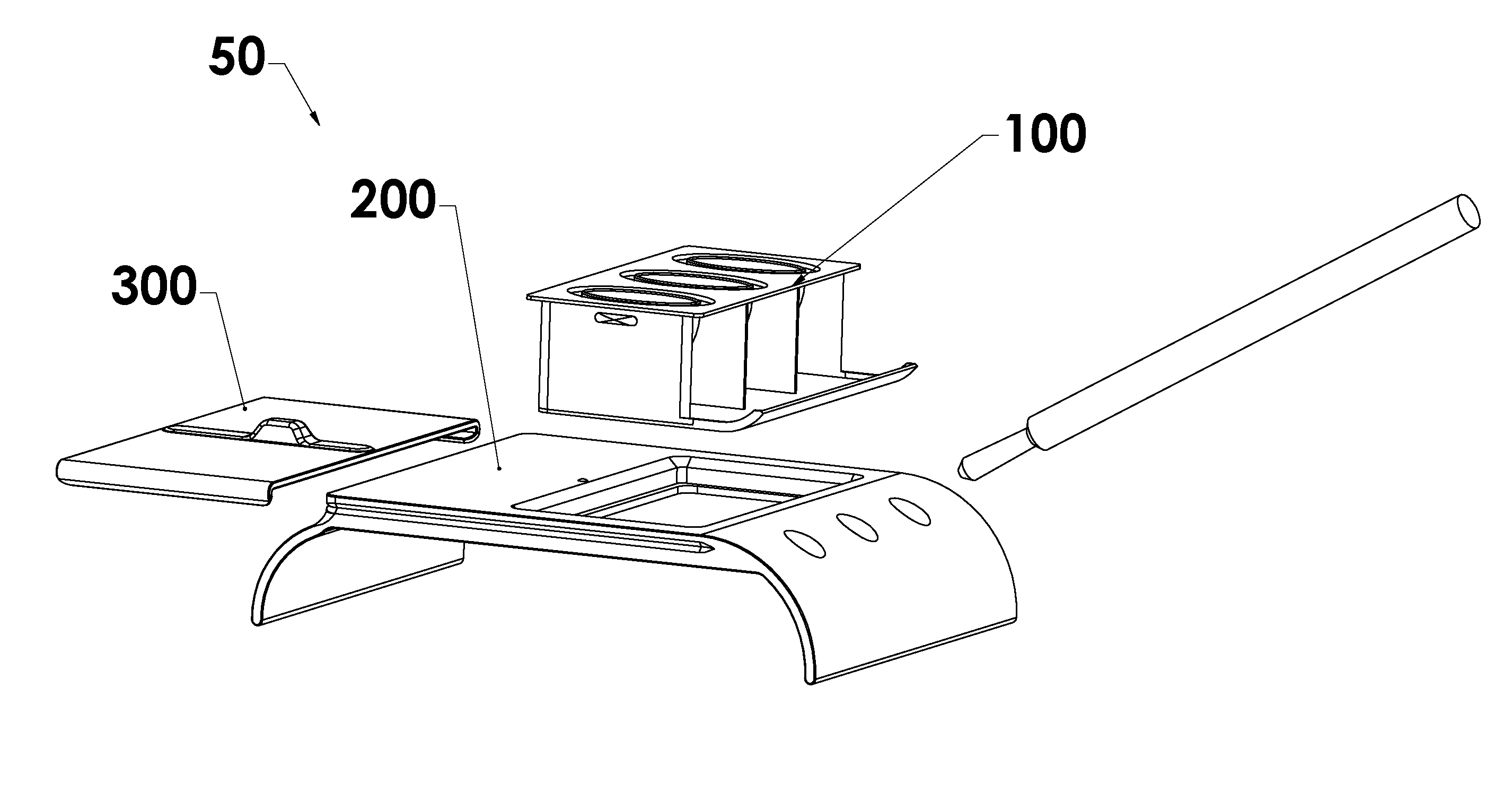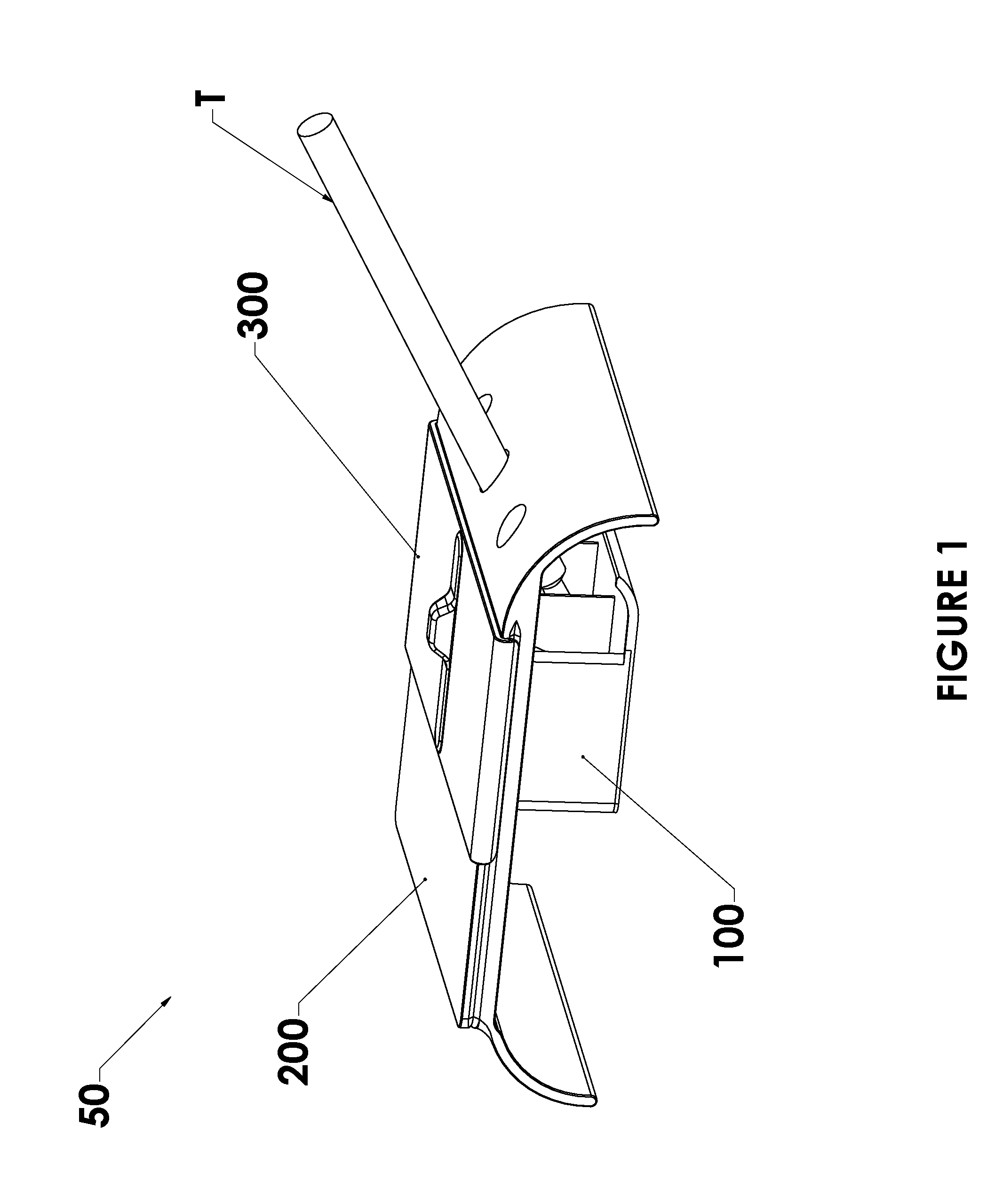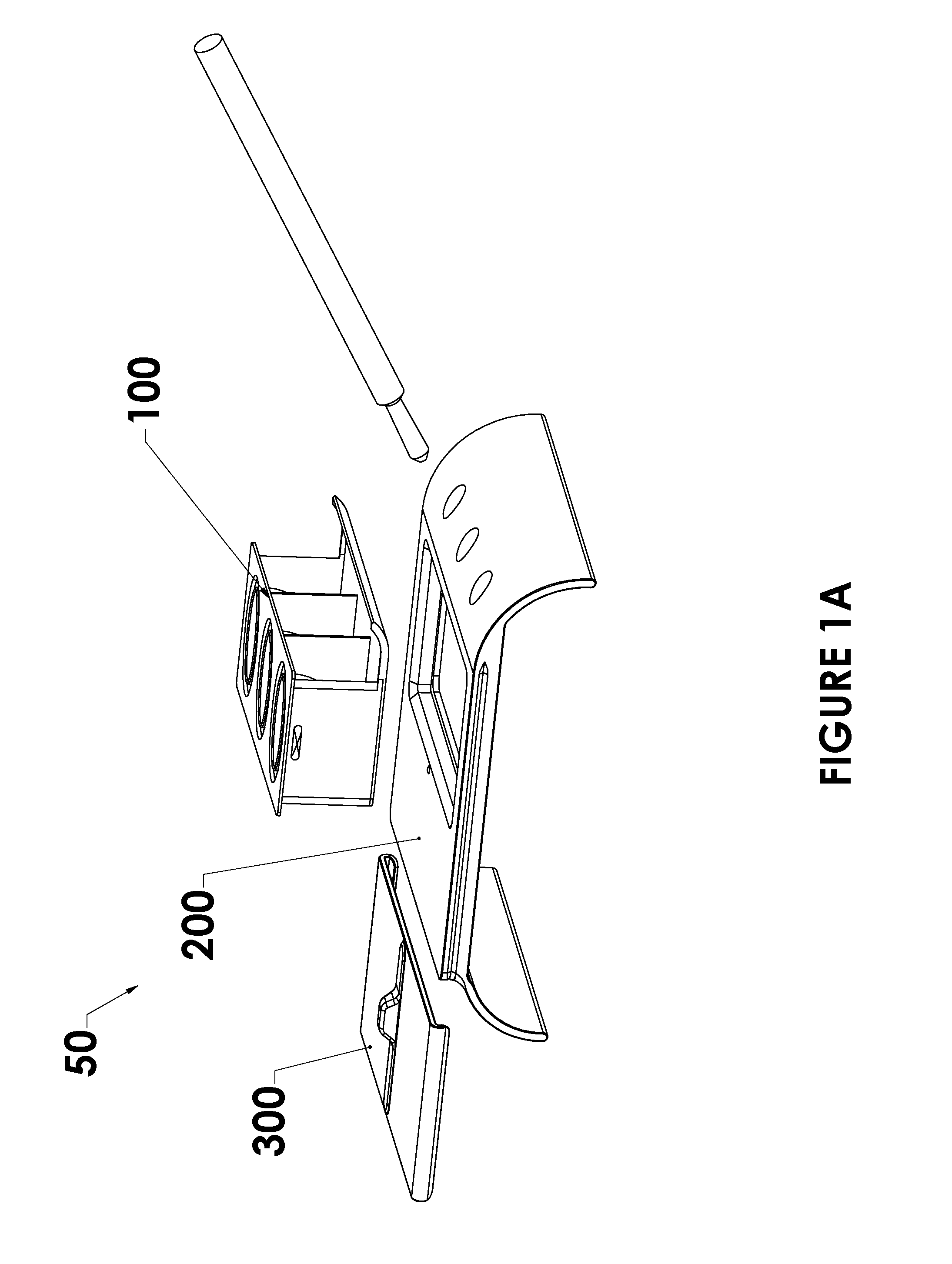Tray
a technology for trays and trays, applied in the field of trays, can solve the problems of difficult operation of covers to protect wells, high risk of material sensitivity to premature evaporation or setting
- Summary
- Abstract
- Description
- Claims
- Application Information
AI Technical Summary
Benefits of technology
Problems solved by technology
Method used
Image
Examples
Embodiment Construction
[0029]The invention will be more fully illustrated by the following detailed description of non-limiting specific embodiments in conjunction with the accompanying drawing figures. In the figures, similar elements and / or features may have the same reference label. Further, various elements of the same type may be distinguished by following the reference label with a second label that distinguishes among the similar elements. If only the first reference label is identified in a particular passage of the detailed description, then that passage describes any one of the similar elements having the same first reference label irrespective of the second reference label.
BRIEF DESCRIPTION OF THE DRAWINGS
[0030]FIG. 1 is an oblique top-left-front view of an embodiment, in accordance of aspects of the present invention, of an apparatus for holding material to be dispensed, the apparatus having a housing, a frame and a lid.
[0031]FIG. 1A is an exploded oblique top-left-front view of the apparatus ...
PUM
 Login to View More
Login to View More Abstract
Description
Claims
Application Information
 Login to View More
Login to View More - R&D
- Intellectual Property
- Life Sciences
- Materials
- Tech Scout
- Unparalleled Data Quality
- Higher Quality Content
- 60% Fewer Hallucinations
Browse by: Latest US Patents, China's latest patents, Technical Efficacy Thesaurus, Application Domain, Technology Topic, Popular Technical Reports.
© 2025 PatSnap. All rights reserved.Legal|Privacy policy|Modern Slavery Act Transparency Statement|Sitemap|About US| Contact US: help@patsnap.com



